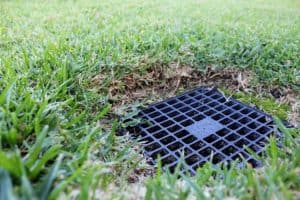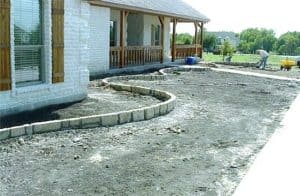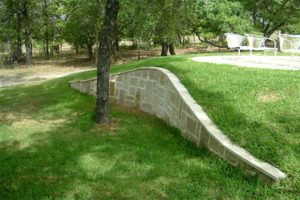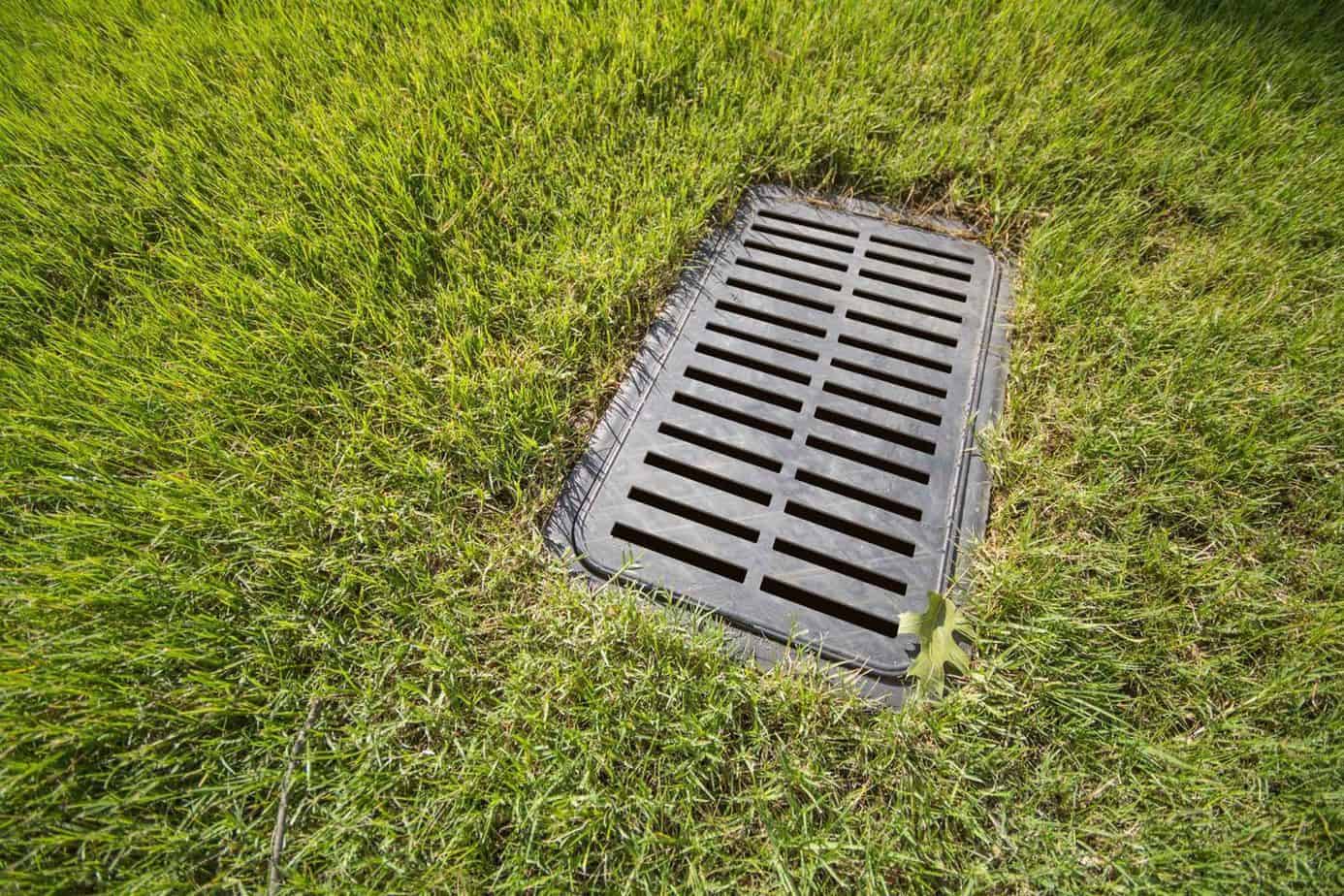While water is essential for any landscape, too much of a good thing can be detrimental. As a homeowner, a waterlogged yard is one of the last things you want to deal with. Not only is it unsightly, but it can also damage your property and even your home’s foundation. Fortunately, many landscape drainage solutions are available to help you tackle this problem. In this blog, we’ll take a closer look at six landscape drainage solutions that can make a big difference in the health and appearance of your yard.
Surface Drain Systems

A surface drain system manages excess water on the ground’s surface as a designed drainage system. These systems are used in flood-prone areas or to prevent surface water pooling.
A surface drain is the most straightforward landscape drainage system to implement. It connects corrugated plastic tubes, usually buried underground, to the gutter-system downspouts and other water collection sources. The drain directs the water away from your home and yard into the sewer system.
Dry wells collect and disperse water slowly into surrounding landscapes, utilizing newer technology features. This method allows plants to collect some excess water and send it back to the underlying groundwater table. Systems like this not only help your home to be more efficient but help our communities as well.
One advantage of surface drain systems is that they are relatively easy to install and maintain. They also tend to be less expensive than other types of drainage systems, such as subsurface drainage systems. Other drainage systems may outperform surface drains in areas with heavy rainfall or highly compacted soil.
Overall, surface drain systems are essential in managing surface water and preventing flooding. These systems collect and redirect water, safeguarding property and preventing water-related disasters.
At Circle D Construction, we can design and install surface drainage systems tailored to your property’s specific needs. We use high-quality materials and state-of-the-art technology to ensure that your surface drain system is effective, reliable, and long-lasting.
Learn More: The Rundown on Drains
French Drain Systems
French drain systems are designed by property owners to manage excess water on the ground’s surface. It is a simple and effective solution for directing water away from areas where it can cause damage to structures.
The system includes a trench, usually 18 inches wide and deep, but its size can vary based on specific needs. The trench is filled with porous material and covered with soil and vegetation to create a natural-looking surface.
Surface water seeps through soil into the trench, which directs it away from the area. The water then flows through the gravel and into a perforated pipe at the bottom of the trench. The pipe carries the water away from the area and directs it to a collection point, such as a retention pond or storm sewer.
There are several benefits to using a French drain system. First, it is an affordable solution for managing excess water on the ground’s surface. Contractors can also install it relatively easily and customize it to fit the specific needs of the area. Additionally, because it is a surface drain system, excavating large soil areas or disrupting the landscaping is unnecessary.
One important consideration when installing a French drain system is the slope of the terrain. The system relies on gravity to direct water away from the area, so it is important to ensure that the slope of the trench is steep enough to allow water to flow away from the area. A shallow slope can cause water to accumulate in the trench and prevent it from being directed away from the area.
Overall, a French drain system is an effective and affordable solution for managing excess water on the ground’s surface. It can help protect buildings, landscaping, and other structures from water-related damage and prevent flooding in areas with a high risk of water accumulation.
Surface Regrading

Known technically as a “swale,” this water management system uses the contour of the land to direct water away from a home or building and into a bog or a standard drain. You should plan a surface regrading carefully with the advice and help of a landscape architect or professional. In particular, the elevation drop must be at least one inch for every ten feet to be effective.
One crucial consideration when regrading a surface is the gradient of the slope. The slope should be gentle enough to allow water to flow smoothly but steep enough to ensure that water does not pool or collect in any one area. The specific gradient will depend on several factors, including the amount of water that needs to be managed, the soil type, and the surrounding landscape.
Surface regrading is an effective solution for managing surface water and preventing flooding in areas with a high risk of water accumulation. It is also commonly used in landscaping to create new slopes, level uneven terrain, and improve the landscape’s overall appearance. While it can be time-consuming and labor-intensive, the long-term benefits of surface regrading can be significant, including improved drainage, reduced erosion, and increased property value.
Learn More: Yard Regrading 101
Sump Pumps
A sump pump is a type of mechanical device that is used to remove water from the basement or crawl space of a building. An installer typically installs it in a pit or sump basin, which collects water accumulated due to heavy rainfall, melting snow, or other sources of excess water.
The sump pump activates when the water level in the pit reaches a certain level, and it pumps the water out of the pit and away from the building. The water is typically directed to a storm sewer, drainage ditch, or other suitable location.
Several types of sump pumps exist, including pedestal pumps and submersible pumps. Pedestal pumps sit on a pedestal above the sump pit, while submersible pumps are installed directly in the pit. Submersible pumps are generally more efficient and less noisy than pedestal pumps but can also be more expensive.
Sump pumps are essential in managing excess water and preventing flooding in buildings with basements or crawl spaces. They are vital in areas with a high risk of water accumulation, such as low-lying areas or areas with heavy rainfall.
One important consideration when using a sump pump is maintenance. You should inspect sump pumps regularly to ensure they are in good working condition. This may include cleaning the pump and pit, checking the electrical connections, and testing the pump to ensure it works properly.
Another consideration when using a sump pump is power outages. If the power goes out during a heavy rainstorm, the sump pump may not be able to operate, and the pit may overflow. Some sump pumps are equipped with battery backups to prevent this and keep the pump running even during a power outage.
Overall, sump pumps are essential in managing excess water and preventing flooding in buildings with basements or crawl spaces. Removing water from the building can help protect property and prevent damage from water-related disasters.
Retaining Walls

As their name indicates, retaining walls are one of the most popular landscape drainage solutions to keep various materials from falling or entering an area they don’t belong. This usually applies to the soil but often includes rocks and water.
Retaining walls are a popular landscaping feature that enhances your property’s visual appeal and provides a functional drainage solution. Retaining walls can hold soil or other materials back, prevent erosion, and create level terraced areas in sloped landscapes.
Because of their importance, professionals should carefully plan, design, and install retaining walls. Many factors could cause a DIY retaining wall to fail, potentially costing you a lot of time and money. Water buildup behind poorly designed or improperly installed retaining walls is the first reason for failure. Typical uses for these landscape drainage solutions include abruptly changing the elevation level of landscaping to provide more usable space for the homeowner.
You can use several materials, including concrete, natural stone, brick, and timber, to build a retaining wall. Concrete retaining walls are one of the most popular options due to their durability, strength, and versatility. Contractors can pour in place or made from precast concrete blocks and customized to fit any design style or property needs.
Concrete retaining walls are one of the most popular options due to their durability, strength, and versatility. Contractors can pour in place or made from precast concrete blocks and customized to fit any design style or property needs.
Retaining walls not only serve as a functional drainage solution but can also enhance the visual appeal of your property. Contractors can create retaining walls that fit any landscape style, from modern to rustic, and can incorporate a variety of textures, colors, and patterns.
Erosion Control
Erosion control is a critical aspect of any landscaping project, especially for homeowners who want to protect their property from damage caused by soil erosion. Areas with steep slopes, heavy rainfall, or erosion-prone soils may face significant issues with erosion.
Texas homeowners are familiar with heavy rainstorms. But did you know that excess water can move large amounts of soil in a single rainstorm? For this reason, installing erosion control is essential to keep your soil in its place. Consider planting shrubs, trees, or even some grass. Erosion control is far more accessible and cost-effective than replacing lost soil regularly.
Why Choose Circle D Construction for Landscape Drainage Solutions
At Circle D Construction, we have experience providing high-quality landscape drainage solutions to homeowners throughout the area. We commit to delivering outstanding customer service, expert advice, and top-quality workmanship on every project we undertake with our team of experts.
When you choose Circle D Construction for your landscape drainage needs, you can expect the following:
- Customized Solutions – We understand that every homeowner’s property is unique. We take the time to assess your property’s specific needs to develop a customized solution that fits your property’s features.
- Experienced Professionals – Our team of experts has extensive experience designing and implementing effective landscape drainage solutions. We use the latest techniques and materials to ensure our solutions are practical and sustainable.
- Transparent Communication – We believe in keeping our clients informed every step of the way. We provide regular updates on the project’s progress and communicate any changes or issues that arise.
- High-Quality Workmanship – We take pride in delivering top-quality craft on every project. We only use the best materials and techniques to ensure your landscape drainage solution is built to last.
- Excellent Customer Service – At Circle D Construction, we commit to delivering outstanding customer service. We strive to exceed our client’s expectations and ensure that we complete every project to their satisfaction.
- Competitive Pricing – We understand that homeowners want the most value for their investment. That’s why we offer competitive pricing for our landscape drainage solutions without compromising quality.
In conclusion, when you choose Circle D Construction for your landscape drainage needs, you can trust that you are working with a team of experienced professionals committed to delivering customized, high-quality solutions that will protect your property for years. Contact us today to learn more about our services and schedule a consultation.

